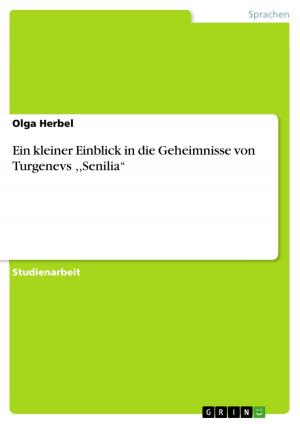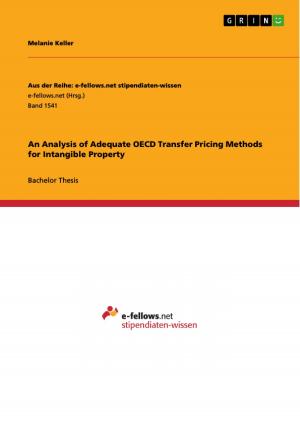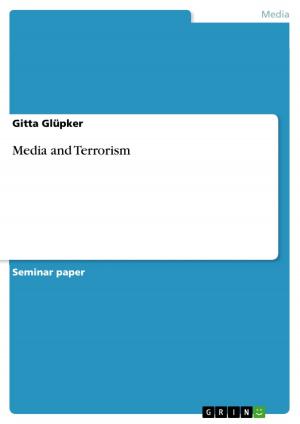'You, who disturb my sleep...' - The figure of the mummy in 19th and 20th century American Literature
The figure of the mummy in 19th and 20th century American Literature
Nonfiction, Entertainment, Drama, Anthologies| Author: | Desirée Kuthe | ISBN: | 9783638822213 |
| Publisher: | GRIN Publishing | Publication: | July 18, 2007 |
| Imprint: | GRIN Publishing | Language: | English |
| Author: | Desirée Kuthe |
| ISBN: | 9783638822213 |
| Publisher: | GRIN Publishing |
| Publication: | July 18, 2007 |
| Imprint: | GRIN Publishing |
| Language: | English |
Seminar paper from the year 2006 in the subject American Studies - Literature, grade: 1,3, University of Dortmund (Institut für Anglistik und Amerikanistik), course: Way down to Egypt's Land, 9 entries in the bibliography, language: English, abstract: The fascination with old Egypt, which came up in the western world after Napoleon's conquest of Egypt in 1798 and reached a peak in 19th century America, was uttered in a vast amount of novels and stories concerned with Egypt and its symbols. One of the most important of these symbols, among pyramids and Pharaohs, is the mummy - the human body, which has 'survived' not only centuries but millenniums. The interest of novelists with Egypt in general and the mummy in particular may have been in its zenith in 19th century, but it has never completely ceased, as the great variety of books about mummies recently published shows. In this paper, Louisa May Alcott's 'little-known short story' (Trafton 2005:126) Lost in a Pyramid or the Mummy's Curse, which was published in 1869, will be compared to a novel by Anne Rice: The Mummy or Ramses the Damned, having been published in 1980, but having chosen a setting at the beginning of the 20th century (1914). This paper wants to show, that in spite of having been written with 111 years' time distance, the two texts, use a surprisingly similar set of themes and motives to develop their story. After a short exploration of the historical background of the two texts, I will try to identify and analyze these elements. The examination of the single motives will then lead to the question of a general classification of the two texts, answering the question if, or if not, they belong to the Gothic genre. This paper will also try to make clear, that regardless of the similarity of the set of conventions used in the texts, the means with which this set has been used differ very much.
Seminar paper from the year 2006 in the subject American Studies - Literature, grade: 1,3, University of Dortmund (Institut für Anglistik und Amerikanistik), course: Way down to Egypt's Land, 9 entries in the bibliography, language: English, abstract: The fascination with old Egypt, which came up in the western world after Napoleon's conquest of Egypt in 1798 and reached a peak in 19th century America, was uttered in a vast amount of novels and stories concerned with Egypt and its symbols. One of the most important of these symbols, among pyramids and Pharaohs, is the mummy - the human body, which has 'survived' not only centuries but millenniums. The interest of novelists with Egypt in general and the mummy in particular may have been in its zenith in 19th century, but it has never completely ceased, as the great variety of books about mummies recently published shows. In this paper, Louisa May Alcott's 'little-known short story' (Trafton 2005:126) Lost in a Pyramid or the Mummy's Curse, which was published in 1869, will be compared to a novel by Anne Rice: The Mummy or Ramses the Damned, having been published in 1980, but having chosen a setting at the beginning of the 20th century (1914). This paper wants to show, that in spite of having been written with 111 years' time distance, the two texts, use a surprisingly similar set of themes and motives to develop their story. After a short exploration of the historical background of the two texts, I will try to identify and analyze these elements. The examination of the single motives will then lead to the question of a general classification of the two texts, answering the question if, or if not, they belong to the Gothic genre. This paper will also try to make clear, that regardless of the similarity of the set of conventions used in the texts, the means with which this set has been used differ very much.















